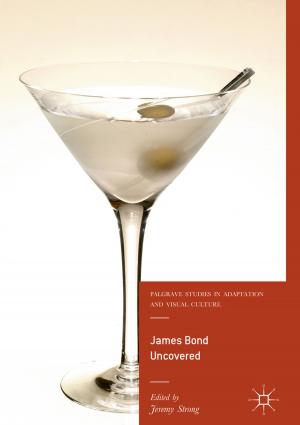Modelling Public Transport Passenger Flows in the Era of Intelligent Transport Systems
COST Action TU1004 (TransITS)
Business & Finance, Management & Leadership, Operations Research, Nonfiction, Science & Nature, Technology, Engineering, Civil| Author: | ISBN: | 9783319250823 | |
| Publisher: | Springer International Publishing | Publication: | February 3, 2016 |
| Imprint: | Springer | Language: | English |
| Author: | |
| ISBN: | 9783319250823 |
| Publisher: | Springer International Publishing |
| Publication: | February 3, 2016 |
| Imprint: | Springer |
| Language: | English |
This book shows how transit assignment models can be used to describe and predict the patterns of network patronage in public transport systems. It provides a fundamental technical tool that can be employed in the process of designing, implementing and evaluating measures and/or policies to improve the current state of transport systems within given financial, technical and social constraints. The book offers a unique methodological contribution to the field of transit assignment because, moving beyond “traditional” models, it describes more evolved variants that can reproduce:
• intermodal networks with high- and low-frequency services;
• realistic behavioural hypotheses underpinning route choice;
• time dependency in frequency-based models; and
• assumptions about the knowledge that users have of network conditions
that are consistent with the present and future level of information that intelligent transport systems (ITS) can provide. The book also considers the practical perspective of practitioners and public transport operators who need to model and manage transit systems; for example, the role of ITS is explained with regard to their potential in data collection for modelling purposes and validation techniques, as well as with regard to the additional data on network patronage and passengers’ preferences that influences the network-management and control strategies imple
mented. In addition, it explains how the different aspects of network operations can be incorporated in traditional models and identifies the advantages and disadvantages of doing so. Lastly, the book provides practical information on state-of-the-art implementations of the different models and the commercial packages that are currently available for transit modelling. Showcasing original work done under the aegis of the COST Action TU1004 (TransITS), the book provides a broad readership, ranging from Master and PhD students to researchers and from policy makers to practitioners, with a comprehensive tool for understanding transit assignment models.
This book shows how transit assignment models can be used to describe and predict the patterns of network patronage in public transport systems. It provides a fundamental technical tool that can be employed in the process of designing, implementing and evaluating measures and/or policies to improve the current state of transport systems within given financial, technical and social constraints. The book offers a unique methodological contribution to the field of transit assignment because, moving beyond “traditional” models, it describes more evolved variants that can reproduce:
• intermodal networks with high- and low-frequency services;
• realistic behavioural hypotheses underpinning route choice;
• time dependency in frequency-based models; and
• assumptions about the knowledge that users have of network conditions
that are consistent with the present and future level of information that intelligent transport systems (ITS) can provide. The book also considers the practical perspective of practitioners and public transport operators who need to model and manage transit systems; for example, the role of ITS is explained with regard to their potential in data collection for modelling purposes and validation techniques, as well as with regard to the additional data on network patronage and passengers’ preferences that influences the network-management and control strategies imple
mented. In addition, it explains how the different aspects of network operations can be incorporated in traditional models and identifies the advantages and disadvantages of doing so. Lastly, the book provides practical information on state-of-the-art implementations of the different models and the commercial packages that are currently available for transit modelling. Showcasing original work done under the aegis of the COST Action TU1004 (TransITS), the book provides a broad readership, ranging from Master and PhD students to researchers and from policy makers to practitioners, with a comprehensive tool for understanding transit assignment models.















